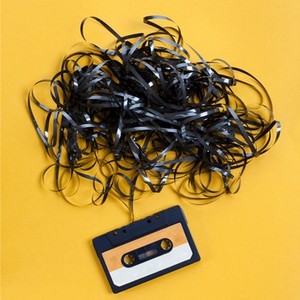
The A-Z of Radio Imaging
Author: Izabela Russell Bio: Managing Director of Music Radio Creative - an online audio production company that allows you to create your radio imaging elements from start to finish.

Since then the versatility or radio imaging has increased together with developments of internet radio and music genres over the last 20 years. Radio stations are now seeking to develop their own brand and are exploring the possibilities these relatively new niches can bring.
Radio stations that decide to have their shows branded with jingles do it because they want to sound professional and they want to make great first impressions. But how do you write the perfect copy? What are the rules? What is the blueprint to get started? This article will tell you just that!
First Things First – How Much Audio is Enough?

At the very minimum invest in your show intro. You have approximately 30 seconds to grab attention and impress your listener. Your show intro is the absolute key!
Further elements can include shorter sweepers or transitions between different parts of your radio show. You also could think of a show outro – which is your opportunity to include a relevant call to action.
If your radio segment is fairly long (say 45 minutes or more) you may want to invest in some radio sweepers. They can simply add entertainment value as well as break up your content into smaller chunks. They also work well when you transition into another genre of music or change the tempo of the show.
So how long should your branding be? Think of the overall length of your radio show/segment and apply the 5% – 10% rule. If your average radio segments are 30 minutes long – audio elements you use for branding shouldn’t exceed 1.5 – 3 minutes.
Want to Know a Secret?
From a branding perspective, you shouldn’t do what everyone else does. I would actually encourage you to think outside the box. Who says you can’t play your intro after speaking for 30 seconds first? Perhaps you could read it out yourself differently each time (I do not mean pre-record and play – more on that later). How about adding themes to your intros and outros based on the mood you are in? This world is truly open. Don’t be afraid to be different. This is what will make your station and show stand out!
First Stop – Script Writing!
You are in a great place to get started. You most likely know your niche and your target listener very well – this gives you an advantage over the best script writer in the world! There are some basic rules to follow.
Firstly think of your target audience – who is likely to tune in? Would it be a male or female audience, what age range do they fall into? This should enable you to determine what language/accent you would likely use for the wording of your scripts.
Decide who you would like to appeal to the most, their age group, sex – in other words your perfect avatar. Use some adjectives to describe what they like and dislike, how they behave, talk and react. This will be a very valuable learning curve for you and will allow you to focus down on what truly matters. It is very hard to be everything to everyone!
- Working professionals – keep the language professional and to the point. Use industry relevant keywords that are likely to immediately communicate your expertise.
- Kids (or parents of kids) – here you can be imaginative and very relaxed in your attitude – kids like to have fun and adults that look for that content are likely to be very appreciative of that too.
- Geeks – make your scripts geeky too! Just make sure that any “lingo” is internationally recognised – internet radio is a very international medium and there are significant cultural differences between the US and UK.
- Specific and very small genre of music – use words that would appeal to the niche (technical, industry specific words). Don’t be afraid to go niche with your radio show intro!
- Keep it clean – do not include explicit copy as you will lose listeners as a result.
Key Ingredient: The Voice

Other important factors to consider include:
- Age of the voice artist
- The energy in their voice
- Locality of the accent
- Suitability of the voice to the script itself (they should go hand in hand!)
Once again please do not assume that one size fits all. The fact that one voice works great on your favourite radio show does not mean it will be equally effective on yours.
One thing I never and I mean ever recommend is pre-recording your own show opener. It doesn’t sound right. You can have the best voice in the world but the harsh reality is – the concept itself truly sucks!
Good places to look for variety of voices:
- Music Radio Creative: https://musicradiocreative.com/ (full disclosure – I am one of the company directors)
- Voiceover Facebook groups – there are many of them out there – good place to tap the talent directly! Simply search voiceover in the Facebook search bar.
- Voice Bunny: https://voicebunny.com
Putting the Puzzle Together

1.You could start with something like “Welcome to the X Show” or “This is the X Show”
2.Then list a brief description of what it is about or what music you play (point no 3 above is very helpful here).
“where it is all about the X, Y and Z”…
“where the host X explores X, Y, Z”…
“bringing together a community of X, Y and Z fans”…
“giving you an inside peek into X, Y, Z”…
3. Introduce the host. Examples of how to do that below:
“Now time to welcome your host.. Mr X”
“Here is your host.. Mrs Y”
“And now back to your host.. Mr X”
“Time to welcome your host.. Miss X”
“And here is your host.. (credentials here).. Dr X”
Finish It up in Style!
In my opinion a radio show outro is your biggest opportunity to include a call to action. Thank the listener for tuning in and let them know how to contact you.
- Make your call to action relevant and timeless – it is best to choose something that will not change with time.
- Use only one call to action – inserting any more will simply overwhelm your listener and will not be not effective.
- Keep it short and to the point. Nobody likes long winded spills.
- Brand your elements with consistency. This is the most important branding element of all. You then create an audio image of your radio brand.
Have Fun in the Process
Don’t forget to enjoy the process. Mistakes happen to the best of us and it can take some time to figure out your very own audio brand. Approach this with a smile on your face.
Enjoy the learning curve!
SPECIAL OFFER
Do you want your radio station to sound professional. Look no further! Brand your radio shows with Radio Jingles & DJ Drops. Order your Jingles or DJ drops today from Music Radio Creative & get 15% OFF your first purchase. Use discount code mrcspecial15 at checkout.
